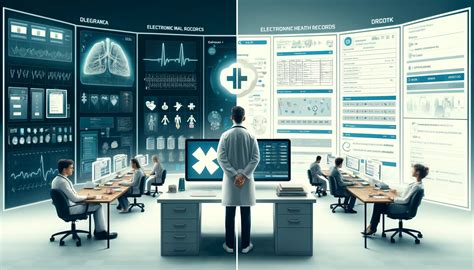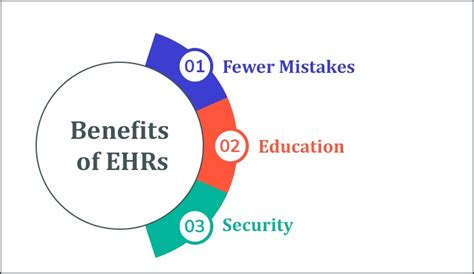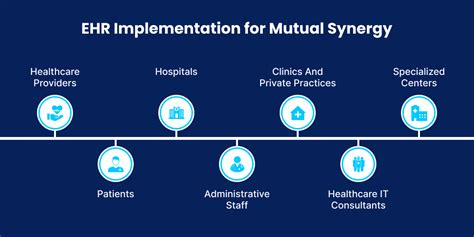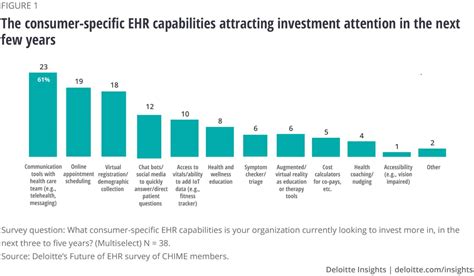Intro
Discover 5 ways EHR improves patient care, streamlining medical records, enhancing data analytics, and boosting clinical decision support, with electronic health records, healthcare technology, and practice management.
The importance of Electronic Health Records (EHRs) cannot be overstated in today's healthcare landscape. As the world becomes increasingly digital, the need for efficient, accurate, and secure management of patient health information has never been more pressing. EHRs have revolutionized the way healthcare providers store, manage, and share patient data, leading to improved patient care, enhanced productivity, and better health outcomes. In this article, we will delve into the world of EHRs, exploring their benefits, working mechanisms, and the steps involved in implementing these systems.
The shift towards EHRs is not just a matter of adopting new technology; it's a fundamental transformation in how healthcare services are delivered. By digitizing patient records, healthcare providers can access critical information quickly, make informed decisions, and provide personalized care. Moreover, EHRs facilitate seamless communication between healthcare teams, reducing errors and improving patient safety. As we navigate the complexities of modern healthcare, it's essential to understand the role EHRs play in shaping the future of medical practice.
The benefits of EHRs extend beyond the clinical setting, with significant implications for public health, research, and policy development. By analyzing large datasets and identifying trends, researchers can develop targeted interventions, track disease outbreaks, and evaluate the effectiveness of treatments. Furthermore, EHRs can help reduce healthcare disparities by providing insights into health inequities and informing strategies to address these gaps. As we explore the world of EHRs, it's crucial to consider the broader implications of these systems and their potential to drive meaningful change in the healthcare sector.
Introduction to EHRs

EHRs are digital versions of patient medical histories, containing a comprehensive record of diagnoses, treatments, medications, and test results. These systems are designed to provide real-time, patient-centered information, enabling healthcare providers to make informed decisions and deliver high-quality care. EHRs typically include a range of features, such as clinical documentation, order management, and decision support tools, which facilitate efficient and effective care coordination.
Key Components of EHRs
The core components of EHRs include: * Patient demographics and contact information * Medical history, including diagnoses, allergies, and sensitivities * Medication lists and treatment plans * Laboratory and radiology results * Clinical notes and progress reports * Immunization records and preventive care recommendationsBenefits of EHRs

The benefits of EHRs are numerous, with significant advantages for patients, healthcare providers, and the broader healthcare system. Some of the key benefits include:
- Improved patient safety and reduced medical errors
- Enhanced care coordination and communication between healthcare teams
- Increased efficiency and productivity, with streamlined clinical workflows
- Better health outcomes, through data-driven decision making and targeted interventions
- Reduced costs, with minimized paperwork and improved resource allocation
Improved Patient Engagement
EHRs also enable patients to take a more active role in their care, with secure online portals and mobile apps providing access to medical records, test results, and communication with healthcare providers. This increased patient engagement can lead to better health outcomes, improved patient satisfaction, and enhanced loyalty to healthcare providers.Implementation of EHRs

Implementing EHRs requires careful planning, significant investment, and ongoing support. The process typically involves:
- Needs assessment and system selection
- Customization and configuration
- Training and education
- Data migration and integration
- Ongoing maintenance and support
Challenges and Barriers
Despite the benefits of EHRs, there are several challenges and barriers to implementation, including: * High upfront costs and ongoing maintenance expenses * Complexity and steep learning curves * Data security and privacy concerns * Interoperability issues and system integration challenges * Resistance to change and cultural barriersFuture of EHRs

As the healthcare landscape continues to evolve, EHRs will play an increasingly critical role in shaping the future of medical practice. Emerging trends and technologies, such as artificial intelligence, blockchain, and the Internet of Things (IoT), will likely transform the EHR landscape, enabling more efficient, effective, and patient-centered care.
Artificial Intelligence and EHRs
The integration of artificial intelligence (AI) and machine learning (ML) into EHRs has the potential to revolutionize clinical decision making, with predictive analytics, natural language processing, and computer vision enabling healthcare providers to: * Identify high-risk patients and predict adverse events * Develop personalized treatment plans and targeted interventions * Analyze large datasets and identify trends and patternsConclusion and Next Steps

In conclusion, EHRs have the potential to transform the healthcare sector, enabling more efficient, effective, and patient-centered care. As we move forward, it's essential to address the challenges and barriers to implementation, while embracing emerging trends and technologies. By working together, we can harness the power of EHRs to improve health outcomes, enhance patient satisfaction, and create a more sustainable and equitable healthcare system.
What are the benefits of EHRs?
+The benefits of EHRs include improved patient safety, enhanced care coordination, increased efficiency, and better health outcomes.
How do EHRs improve patient engagement?
+EHRs enable patients to take a more active role in their care, with secure online portals and mobile apps providing access to medical records, test results, and communication with healthcare providers.
What are the challenges and barriers to EHR implementation?
+The challenges and barriers to EHR implementation include high upfront costs, complexity, data security and privacy concerns, interoperability issues, and resistance to change.
We invite you to share your thoughts and experiences with EHRs, and to join the conversation on the future of healthcare. Whether you're a healthcare provider, patient, or simply interested in the latest developments, your insights and perspectives are invaluable. Let's work together to harness the power of EHRs and create a more sustainable, equitable, and patient-centered healthcare system.
